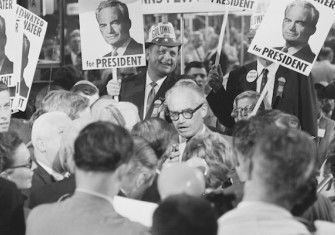How the South Became Republican
America’s southern states were once strongholds for the Democratic Party. In 1952, Eisenhower decided to win them over.

On the evening of 1 August 1952 General Dwight D.Eisenhower, the newly nominated Republican presidential nominee, met with his advisers at the Brown Palace Hotel in Denver where his party’s publicity director Robert Humphreys was to present the blueprint for that year’s campaign in a plan codenamed ‘Document X’. Worried about the Party’s prospects Humphreys was keen to find a solution. Having Eisenhower on the ticket helped. The military hero who had orchestrated the D-Day landings, ‘Ike’ was admired across party divides. Despite this, the task was formidable: Democratic president Franklin D. Roosevelt had relegated the GOP to minority status during the 1930s with his New Deal initiatives. In 1952 just 34 per cent of Americans identified themselves as Republican. In the South – the 11 former states of the Confederacy – fewer than ten per cent of white voters did.







